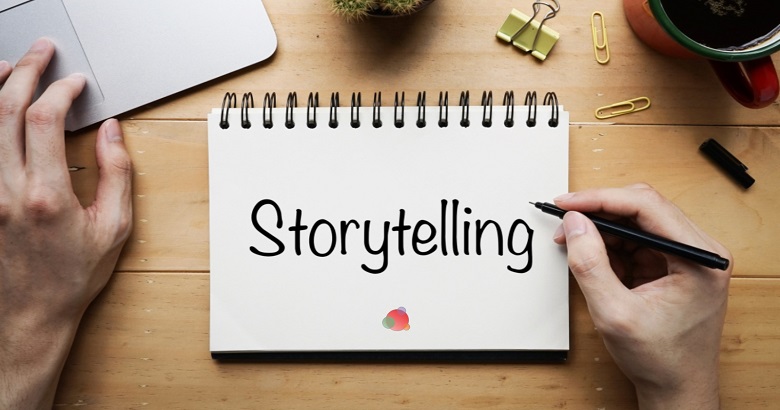
In today’s world, stories aren’t just for entertainment. They’re powerful tools used by businesses, authors, and marketers to connect, engage, and inspire. Strategic storytelling is all about crafting purposeful narratives to achieve specific goals, whether in business, fiction, or personal branding. This article will explore what it means to be a strategic storyteller, the skills needed, and how this role influences various industries, especially the fiction book audience.
1. Introduction: The Role of a Strategic Storyteller
Imagine storytelling as not just a tool for entertainment but as a strategy to connect with your audience on a deeper level. A strategic storyteller knows how to craft narratives that not only entertain but serve a larger purpose. Whether you’re writing a fiction book or working in marketing, the role of a strategic storyteller is to create stories that inspire action, convey a message, and resonate emotionally with an audience.
2. Why Storytelling Matters in Fiction
In fiction, storytelling serves as the lifeblood of the narrative. Writers bring characters to life, evoke emotions, and invite readers into worlds they’ve never known. But strategic storytelling goes beyond creating a good plot—it’s about aligning the story with a deeper message or theme. Whether it’s conveying a moral lesson, challenging societal norms, or simply providing entertainment, fiction writers use strategic storytelling to guide readers through a journey that matters.
3. Strategic Storytelling in Fiction vs. Business
While fiction focuses on emotional engagement, strategic storytelling in business revolves around conveying a brand’s message or achieving specific goals. For example, in fiction, the story’s purpose might be to evoke feelings of empathy or excitement. In marketing or business, the narrative may aim to inspire trust, highlight a product, or change consumer behavior. But in both cases, the strategic element remains—crafting a story that resonates deeply with the audience and drives a specific outcome.
4. Core Responsibilities of a Strategic Storyteller

A strategic storyteller has several key responsibilities:
- Crafting Purposeful Narratives: Every story must serve a clear purpose.
- Understanding the Audience: Knowing who the audience is and what they value.
- Creating Emotional Engagement: Ensuring that the story elicits the intended emotional response.
- Incorporating Conflict and Resolution: Every strong story needs tension that resolves in a meaningful way.
In fiction, this might mean creating characters who undergo transformative journeys. In marketing, this could involve portraying a brand overcoming obstacles.
5. Building Purposeful Narratives
At the heart of strategic storytelling is the idea that every story must have a clear purpose. Whether you’re writing a novel or a business case study, ask yourself: What do I want my audience to take away from this story? This purpose will shape how the story is structured and what elements are emphasized, from character development to the resolution of conflict.
For instance, in a fiction story, the purpose might be to show a character’s personal growth. In business, the purpose might be to highlight how a product solves a problem for the customer.
6. The Importance of Audience Understanding
A strategic storyteller must deeply understand their audience. Who are they? What are their pain points, desires, and values? In fiction, knowing your reader helps you create relatable characters and plotlines. In business, it helps tailor the message to align with consumer needs.
For example, a young adult fiction writer would focus on coming-of-age themes, while a brand targeting eco-conscious consumers might craft stories around sustainability and social responsibility.
7. Crafting Emotionally Engaging Stories
Emotion is the most powerful tool a strategic storyteller can use. Whether it’s joy, sadness, excitement, or fear, emotionally charged stories stick with the audience long after they’ve been told. In fiction, this might mean diving into the internal conflicts of characters, while in business storytelling, it could involve highlighting real-world success stories of customers or employees.
Consider the analogy of a rollercoaster ride. Just like how a rollercoaster takes you through twists, turns, highs, and lows, a good story must evoke emotional highs and lows to keep the audience invested.
8. How to Use Strategic Storytelling in Fiction

In fiction, strategic storytelling involves more than just crafting an entertaining plot. It’s about ensuring that each narrative element—whether character development, setting, or conflict—serves the overarching purpose of the story.
To effectively use strategic storytelling in fiction, ask yourself:
- What is the main message I want my readers to take away?
- How do my characters’ journeys reflect that message?
- What emotions do I want to evoke at different stages of the story?
By answering these questions, you’ll ensure your story not only entertains but also leaves a lasting impact on your readers.
9. Strategic Storytelling in Marketing
In the world of marketing, strategic storytelling can be the difference between a forgettable ad and a campaign that resonates with millions. By weaving a compelling narrative around a product or service, brands can build deeper connections with their audience. It’s not just about highlighting features; it’s about showing how a product fits into the audience’s life story.
Take Apple, for example. Their ads don’t just showcase tech specs—they tell stories of creativity, innovation, and human potential.
10. Relating to Your Audience Through Authenticity
Today’s audience craves authenticity. Whether in fiction or marketing, strategic storytelling requires a level of truth and transparency that resonates with people on a personal level. Audiences can tell when a story is forced or inauthentic. To be effective, your narrative must come from a genuine place, whether it’s the voice of a character or the values of a brand.
In fiction, this could mean creating realistic, flawed characters. In marketing, it could involve sharing real customer experiences or company challenges.
11. Skills Every Strategic Storyteller Needs
Being a successful strategic storyteller requires a mix of creative and analytical skills:
- Creativity: To craft compelling narratives that captivate the audience.
- Emotional Intelligence: To understand and evoke the emotions of the audience.
- Research Skills: To deeply understand the target audience and their needs.
- Adaptability: To modify stories based on audience feedback and changing trends.
12. The Role of Conflict and Resolution in Stories

Conflict drives every good story. It creates tension, keeps the audience engaged, and gives the narrative a sense of purpose. But conflict alone isn’t enough—it must be resolved in a way that reinforces the story’s purpose. In fiction, this might mean a hero overcoming personal struggles. In business, it could be a customer finding success with a brand’s product.
The key is to ensure that the resolution feels earned and reinforces the message you want to convey.
13. Common Pitfalls to Avoid
Even the best storytellers make mistakes. Here are some common pitfalls to avoid in strategic storytelling:
- Overcomplicating the Story: Keep the narrative clear and focused on the core message.
- Ignoring Audience Emotions: Stories that don’t evoke emotion fall flat.
- Inauthentic Narratives: Forced or dishonest stories will alienate your audience.
By avoiding these mistakes, you’ll keep your audience engaged and ensure your story resonates.
14. Strategic Storytelling and Long-Term Impact
The true power of strategic storytelling lies in its ability to create lasting connections. A well-told story doesn’t just entertain—it stays with the audience, shaping their thoughts and behaviors long after it’s over. In fiction, this might mean a character or theme that lingers in the reader’s mind. In business, it could be a story that makes a customer loyal to a brand.
15. Conclusion: The Value of a Well-Crafted Story
At the heart of every great narrative is a strategic storyteller who understands how to weave purpose into every element of thestory. It connects with the audience on an emotional level, conveys a clear message, and serves a specific purpose. Whether you’re writing fiction, crafting a marketing campaign, or simply telling a personal anecdote, strategic storytelling ensures that your narrative leaves a lasting impact.
FAQs on Strategic Storytelling
1. What is strategic storytelling?
Strategic storytelling is the process of crafting a narrative with a clear purpose, aimed at influencing, inspiring, or engaging an audience emotionally.
2. How does strategic storytelling apply to fiction?
In fiction, strategic storytelling ensures that the plot, characters, and themes serve a purpose, often evoking a deeper message or emotional experience.
3. What industries use strategic storytelling?
Strategic storytelling is used across industries including fiction writing, marketing, branding, and public speaking to connect with audiences.
4. Can anyone become a strategic storyteller?
With the right skills—like creativity, emotional intelligence, and audience understanding—anyone can learn the craft of strategic storytelling.
5. Why is audience understanding crucial in strategic storytelling?
Knowing your audience allows you to tailor your narrative in a way that resonates with their emotions, values, and expectations, ensuring the story is impactful.
